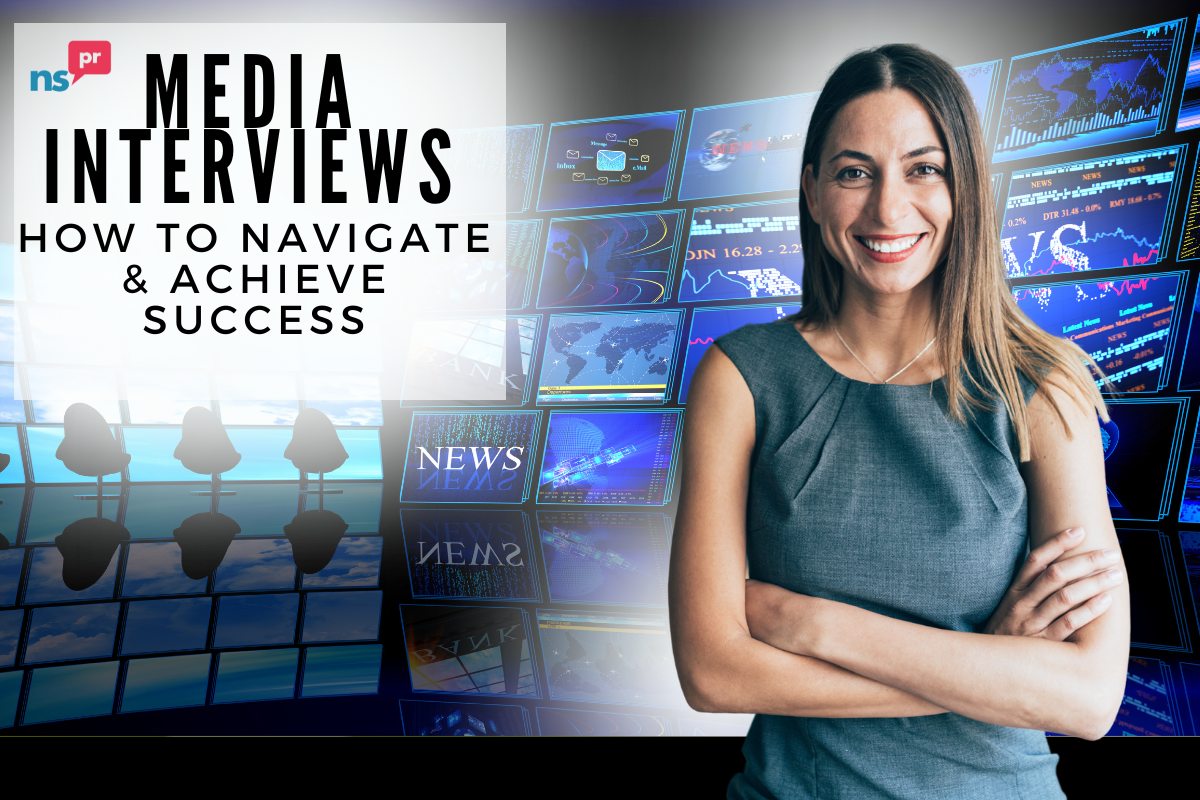
24 May How to Successfully Navigate the Complexities of Media Interviews
Media interviews are integral for achieving brand awareness to a mass audience. However, the ability to effectively navigate the complexities of media interviews can significantly impact shaping public perception, conveying key messages, and building or protecting one’s reputation. We know, this task has its challenges. Let’s explore the intricacies of media interviews and provide valuable insights and techniques to help you excel in this demanding arena.
- Understanding the Media Landscape: Before diving into media interviews, it is essential to comprehend the diverse and evolving media landscape. Familiarize yourself with different types of media outlets, their audiences, editorial perspectives, and interview formats. Develop an understanding of the journalist’s role, their objectives, and how their questions may be framed.
- Preparation is Key: Thorough preparation is the foundation for a successful media interview. Define clear and concise key messages that align with your communication goals. Anticipate potential questions and develop well-crafted responses that reflect your key messages. Research the interviewer, their previous work, and the topics they typically cover to gain insight into their style and approach.
- Craft Your Narrative: Crafting a compelling narrative is crucial for media interviews. Weave your key messages into a coherent, engaging story that resonates with the audience. Use vivid examples, analogies, and personal anecdotes to bring your points to life. Practice delivering your narrative with clarity, conciseness, and confidence.
- Effective Body Language and Nonverbal Communication: Nonverbal cues play a vital role in media interviews. Project confidence through your body language—maintain good posture, make eye contact, and use hand gestures purposefully. Mirror the interviewer’s tone and energy level, but be mindful of your facial expressions and avoid any unintentional signals that may undermine your message.
- Handling Difficult Questions: In media interviews, challenging or provocative questions are inevitable. Rather than becoming defensive, use these moments as opportunities to steer the conversation back to your key messages. Address the underlying concern raised by the question, pivot to a related positive aspect or bridge to a key message that aligns with your narrative. Always remain calm, composed, and focused.
- Bridging to Key Messages: Bridging is a technique that allows you to transition smoothly from the interviewer’s question to your desired message. Use bridging phrases such as “That’s an important point, but what’s even more crucial is…” or “Let me put this into context…” This technique helps you maintain control and delivers your key messages effectively.
- Pacing and Pausing: The power of silence should not be underestimated. Strategic pauses can add impact and allow your key messages to resonate with the audience. Embrace moments of silence to collect your thoughts, emphasize important points, or redirect the conversation. Use pacing to vary your speech rhythm, emphasizing key phrases and maintaining engagement.
- Simplicity and Jargon-Free Communication: Avoid jargon, acronyms, and technical language that may alienate or confuse your audience. Strive for simplicity in your communication, using clear and relatable language. Translate complex concepts into understandable terms and use vivid storytelling to help your audience understand your message more effectively.
- Practice, Feedback, and Continuous Improvement: Like any skill, mastering media interviews requires practice, feedback, and a commitment to continuous improvement.
Mastering the complexities of media interviews is a valuable skill that can elevate your communication effectiveness and enhance your public image. Remember, practice, feedback, and a commitment to continuous improvement are essential for honing your skills and achieving success.


Sorry, the comment form is closed at this time.